Listening time | 20 minutes
Produced and edited by Hagen Gersie, research and curation of text by Jacqueline Flint & hosted by Britt Lawton
In this episode of the David Krut Podcast we are going to step outside and wander into the forest; a forest that is populated with trees drawn and printed by William Kentridge. We are going to hear thoughts and extracts relating to the presence of trees in Kentridge’s body of work. Here we present to you a collection of thoughts and writings about trees and the making of them.
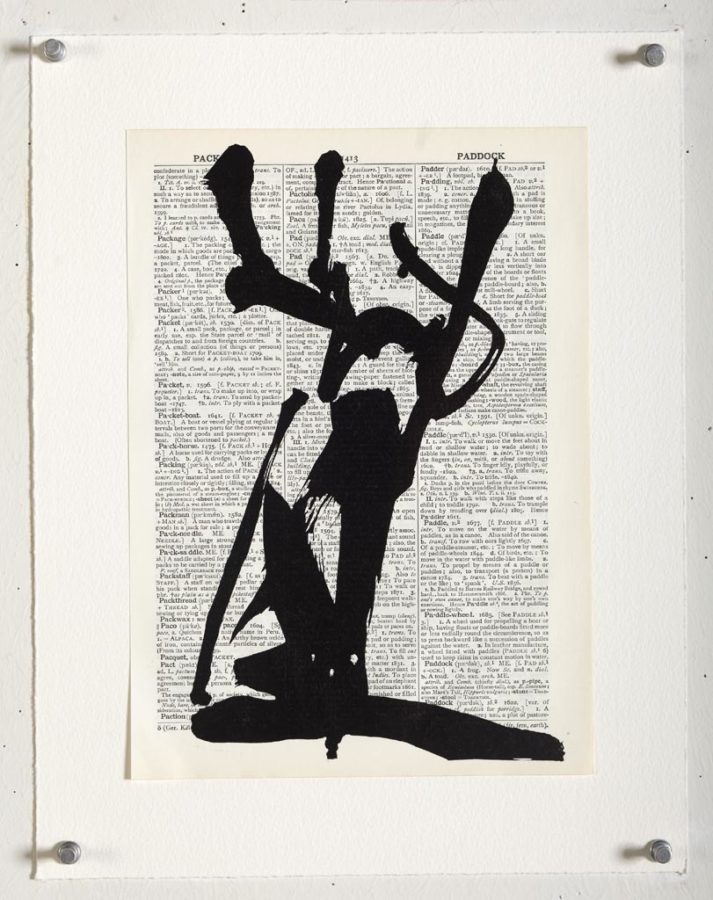
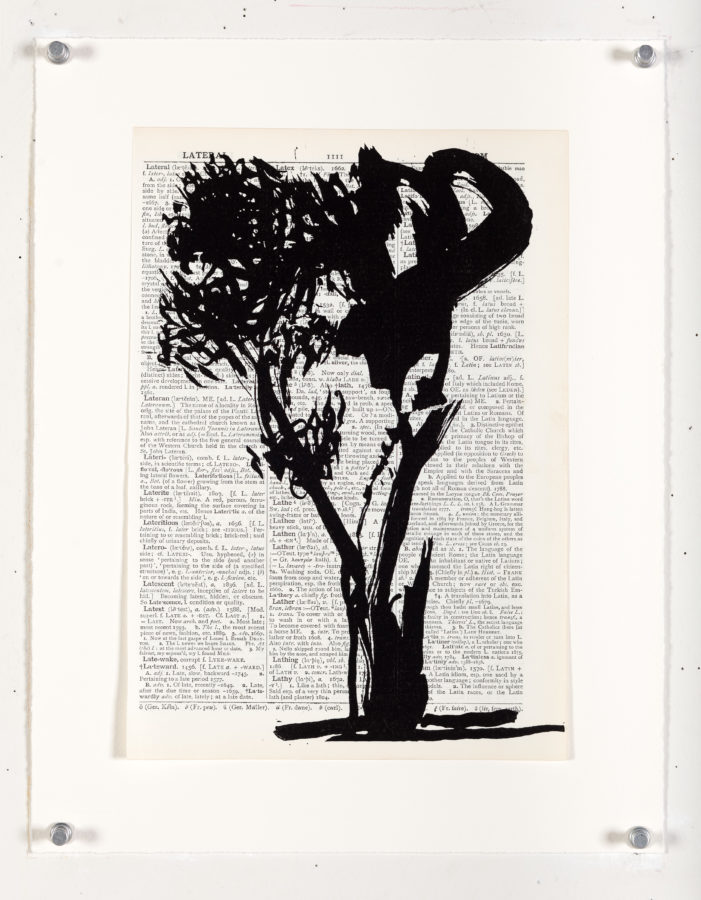

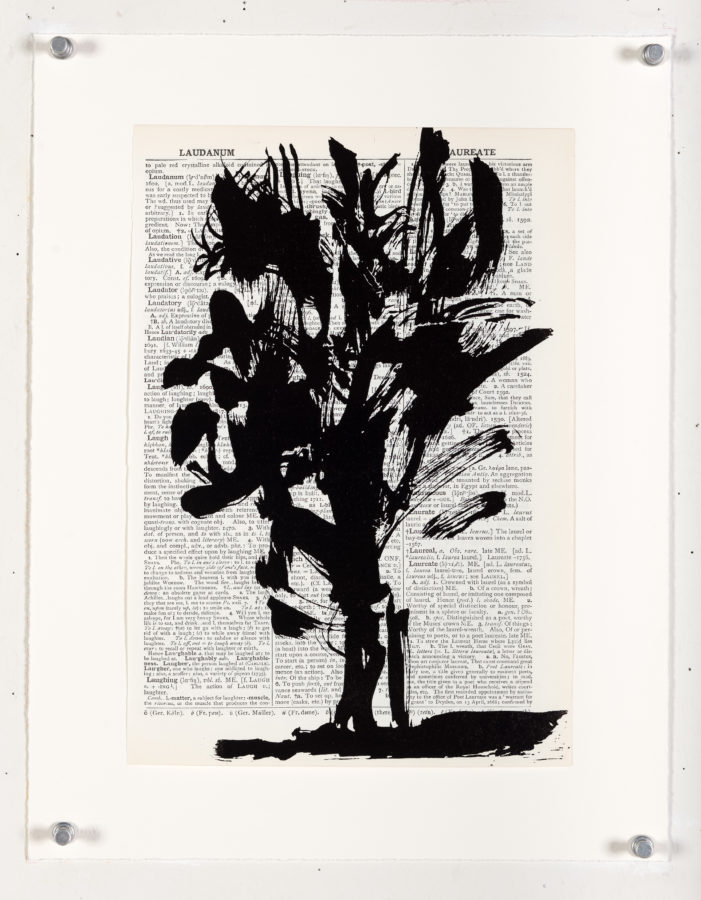


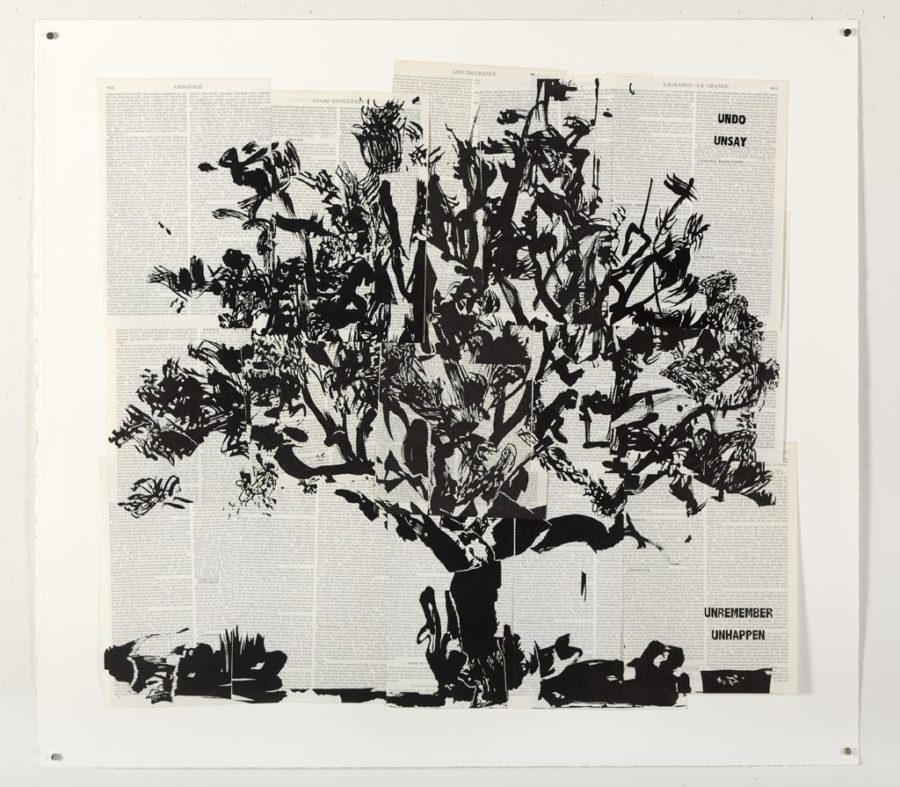
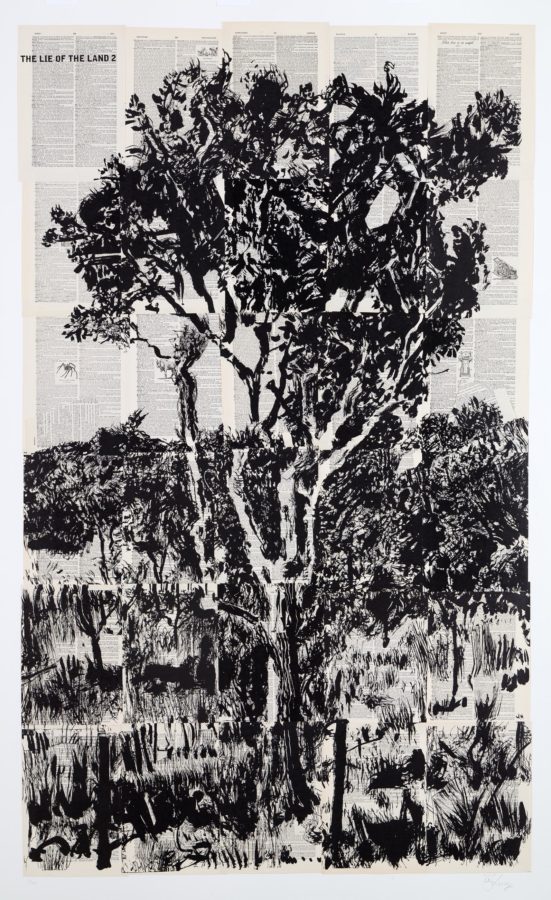
In the few years around the time of his delivery of the Edward Charles Norton lectures at Harvard University in 2012, William Kentridge drew a lot of trees. This is not to say that trees were a new thing for him to draw, but there does seem to be a proliferation of the subject matter in his work between 2011 and 2014. Subsequently, there has been a lot of thinking and writing about how trees fit in and why, aside from being lovely and important, and also what it means to draw trees, and what it means to draw trees on paper that was made out of trees, and on paper that contains knowledge that branches out like a growing sapling – dictionary or encyclopedia paper, for instance.
Examples of this kind of work stretch way back to 1999, to the Sleeping on Glass series of etchings on chine collé pages, which feature images of trees printed onto existing pages of text, with more text printed in red ink on top. In two sibling works, titled This is How The Tree Breaks and Terminal Hurt Terminal Longing a tree is seen flourishing in the former work, and split in two, as if struck by lightning, in the latter.
In a variation on the theme, we can look to the Universal Archive series of linocuts, for which ink drawings were photocopy-transferred onto small linoleum plates, and a team of carvers was gathered with a view to re-creating the drawings through relief printing. Once carved in minute detail, the images were printed onto pages from three different 1950s dictionaries. Some images were printed on a single dictionary page, some two pages, later fifteen and thirty pages.
If You Have No Eye, the pinnacle work of the series, is made from 67 linoleum plates printed onto 104 pages, which were then variously torn, cut and left whole. Each piece was then assembled and collaged, like a puzzle, onto another layer of dictionary sheets that serve as the background field. The dictionary paper and both glossy and matte inks helped the tree to find its form. The entire process – from preparing the linoleum, carving the plates, printing the pieces and assembly, to arriving at a final result; and then producing the full edition – took a massive two years to complete.
Here we present to you a collection of thoughts and writings about trees and the making of them.
- Extract about drawing trees from That which we do not remember with Jane Taylor – p67
- Extract about trees and dictionary pages from That which we do not remember with Jane Taylor – p68
- Extract about trees and Walking Man from That which we do not remember with Jane Taylor – p86
- WK Quotes from Humanitas Visiting Professorship in Contemporary Art (May 2013)
- WK Quotes from Berline Mosse lecture notes – A Dream of Love Reciprocated: History & The Image (January 2014)